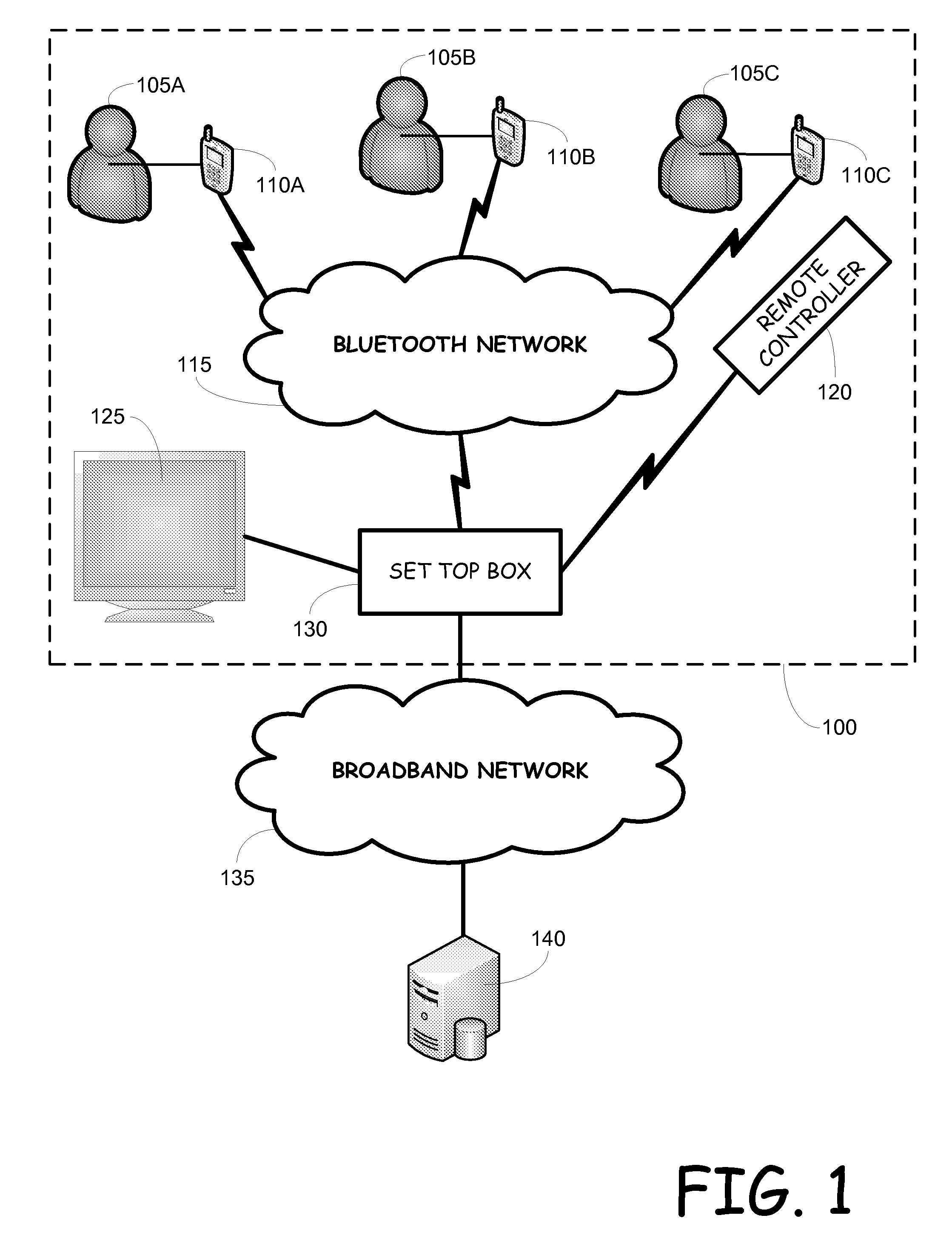Automated presence for set top boxes
a technology of automatic presence and set top boxes, which is applied in the direction of television systems, broadcast services for monitoring/identification/recognition, broadcast information switching/replacement, etc., can solve the problems of broadcast television operators not having the benefit of a dedicated media conduit into a subscriber's home, broadcast television operators not generating any revenue from subscriber fees, and little knowledge about the viewing habits of particular users within a home. , the service provider, advertisers or program content creators hav
- Summary
- Abstract
- Description
- Claims
- Application Information
AI Technical Summary
Benefits of technology
Problems solved by technology
Method used
Image
Examples
Embodiment Construction
[0030]The presently disclosed embodiments, as well as features and aspects thereof, are directed towards providing a system that can recognize the physical presence of a content viewer and correlate that viewer's presence with presumed exposure to specific content that is displayed. Further, some embodiments may link specific demographics associated with a present viewer, or viewers, to content displayed in the viewer's presence. Still other embodiments may track a present viewer's behavior in response to displayed content, such as channel changing, volume control, etc. Even further, some embodiments may be operable to transmit the collected data, such as viewer data correlated with displayed content data, to a central server or some other system component.
[0031]Again, a benefit of some embodiments of an automated presence detection system is the provision of data collection wherein the exposure of specific viewers to displayed content (such as but not limited to, advertisements or ...
PUM
 Login to View More
Login to View More Abstract
Description
Claims
Application Information
 Login to View More
Login to View More - R&D
- Intellectual Property
- Life Sciences
- Materials
- Tech Scout
- Unparalleled Data Quality
- Higher Quality Content
- 60% Fewer Hallucinations
Browse by: Latest US Patents, China's latest patents, Technical Efficacy Thesaurus, Application Domain, Technology Topic, Popular Technical Reports.
© 2025 PatSnap. All rights reserved.Legal|Privacy policy|Modern Slavery Act Transparency Statement|Sitemap|About US| Contact US: help@patsnap.com



